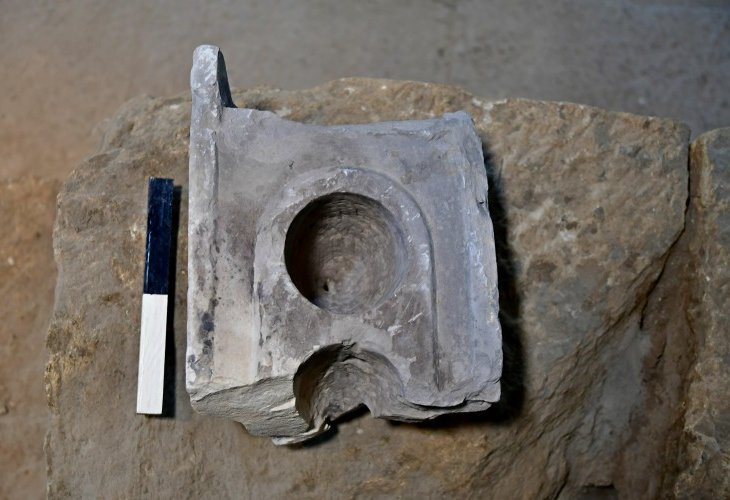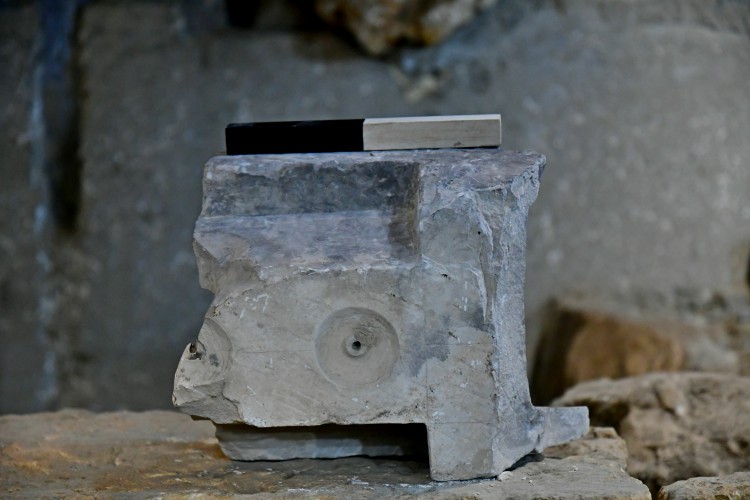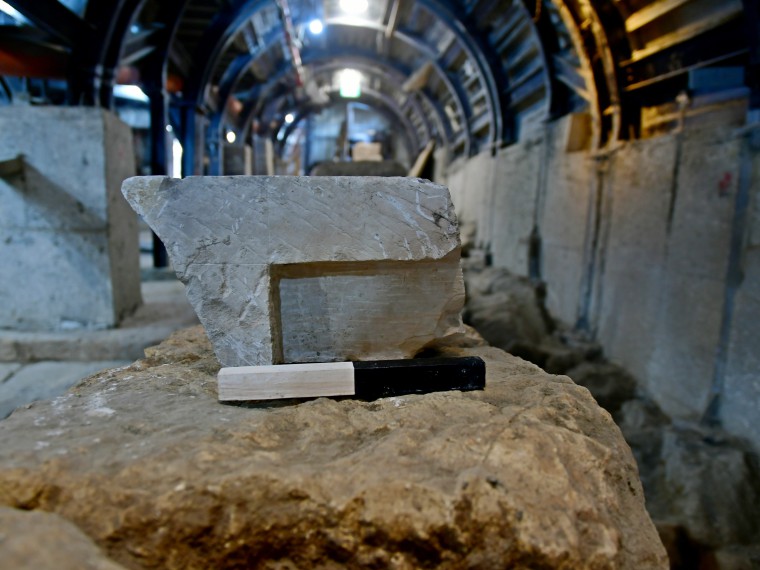Has an Ancient Market in Jerusalem Been Unearthed?
A rare object used for standardized volume measurement, recently discovered in excavations at the City of David, suggests we may have found the central market location of Second Temple era Jerusalem.
 The upper part of the measurement table (Photo: Ari Levi, Israel Antiquities Authority)
The upper part of the measurement table (Photo: Ari Levi, Israel Antiquities Authority)A rare artifact, about 2,000 years old, used for uniform volume measurement, has been uncovered in recent excavations by the Israel Antiquities Authority at the City of David, located in the Jerusalem Walls National Park. This finding supports the theory that an area presumed to be the lower city square from the Second Temple period has been discovered.
The artifact in question is a part of a stone table that was used to set uniform volume measures. It was found near a large paved plaza on the stepped street, which guided pilgrims from the Pool of Siloam to the Temple Mount.
Prof. Roni Reich, who is studying the object, explains: "In the fragment of the measurement table found in the City of David, two of the deep carved recesses remain, each with a small hole at its bottom. The hole could be plugged with a finger to fill the recess with some liquid, which could then be released by removing the finger, allowing the liquid to flow into another vessel and thus determine its volume based on the standard of the measurement table. In this way, merchants could come and calibrate their measuring instruments according to a unified standard."
 The lower part of the measurement table (Photo: Ari Levi, Israel Antiquities Authority)
The lower part of the measurement table (Photo: Ari Levi, Israel Antiquities Authority)Reich notes that this is a rare instrument: "Other stone vessels were very popular in Second Temple Jerusalem, but so far only two instruments for measuring volumes have been discovered in excavations – one was found in the 1970s in the Jewish Quarter, and another in excavations at Shuafat, north of Jerusalem."
Archaeologist Ari Levi, one of the excavation directors at the stepped street on behalf of the Israel Antiquities Authority, adds: "In the excavations of the stepped street in the City of David, a large number of stone weights in various values were also discovered. The weights found are typical of Jerusalem's style. The presence of typical city weights demonstrates the distinctiveness of Jerusalem’s economy and trade during the Second Temple period, possibly under the influence of the Temple."
The stone weights resemble flattened disks and come in various sizes, representing different weight values. According to Reich, more than 90% of these types of stone weights, amounting to several hundred in total, have been found in archaeological excavations conducted in ancient Jerusalem from the Second Temple era. This makes them unique, representing a distinctly Jerusalem phenomenon.
Researchers from the Israel Antiquities Authority, Nahshon Zanton, Moran Hagbi, and Midad Shoor, who are managing the excavation at the stepped street, have recently uncovered a large paved plaza on the street that led up to the Temple Mount during the Second Temple period. They propose that this plaza served as the lower city square where Jerusalem's commercial activity took place.
According to Ari Levi, "The standard volume table we found and the stone weights discovered nearby reinforce the assessment that extensive commercial activity took place at this site, possibly indicating the existence of a market."
Professor Reich speculates, "It is possible that in this part of the city during the Second Temple period, the office of the inspector of measures and weights of Jerusalem was located – a role that was common in other cities across the Roman Empire in antiquity, known by the Greek title agoranomos."
 The measurement table, side view against the stepped street background (Photo: Ari Levi, Israel Antiquities Authority)
The measurement table, side view against the stepped street background (Photo: Ari Levi, Israel Antiquities Authority)
